The Royal Ordnance Factories were built during the rearmament phase of the 1930's, just in time for WWII - Bishopton was by far the largest, employing over 20,000 workers at it's peak in three almost-self-contained factories within one perimeter fence. Factory III closed down almost immediately after the war, but factories I and II continued production of cordite, picrite (an anti-flashing and stabilising agent), RDX, white phosphorus, ball powder (gunpowder) and various other explosives and propellants up until the year 2000.
I spent three days exploring ROF Bishopton, taking hundreds of pictures - even the edited highlights run to 270 pictures, so this is just a brief summary of this absolutely massive (2.5 x 1.5 miles) site. I'll do it in order of my explorations.
Bishopton had over 20 miles of standard-gauge rail lines - these were used with the ROF's own fleet of diesel locos to move raw materials and finished propellant. This is one engine shed for the diesel engines:
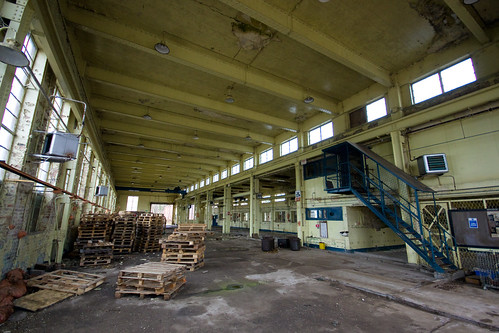
Next onto the pulping and blending house - cordite is a mix of nitroglycerin and nitrocellulose:
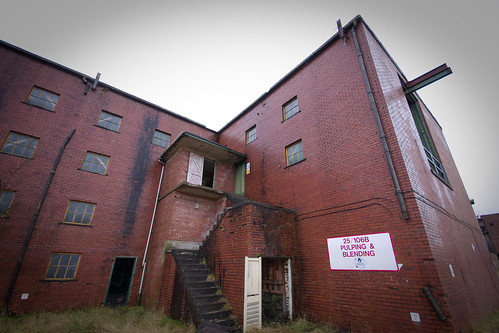
Nitrocellulose pulping is very similar to paper pulping, so paper machinery was used - rows and rows of beaters made by Bertrams of Edinburgh:
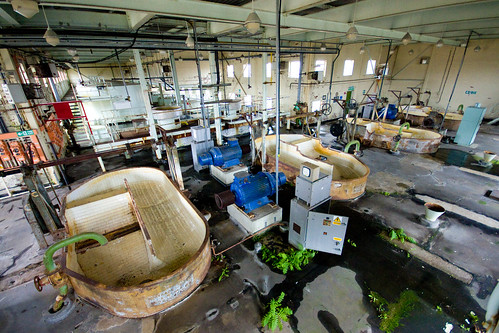
In the same building, giant tanks store the nitric and sulphuric acids used in the process:
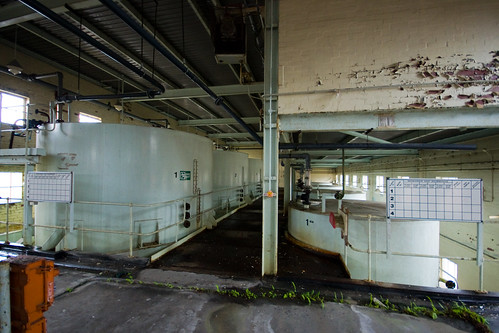
And settling troughs are used to recover waste acid:
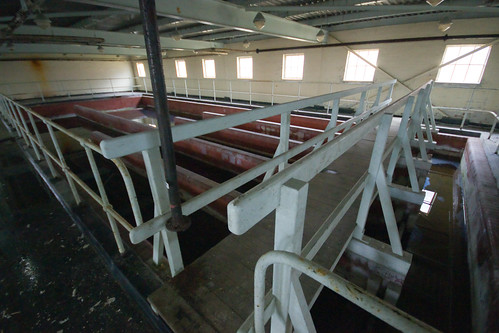
I visited four separate pulping and blending houses in all three factories - all similar in design and layout, but different in size:
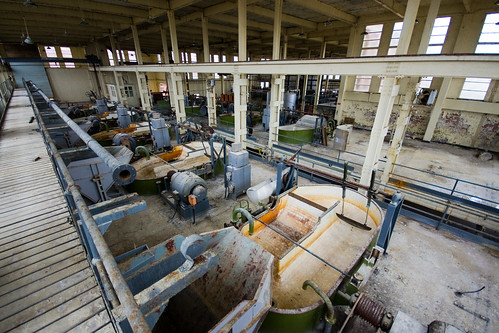
Next, onto a vat house - again, these were duplicated:
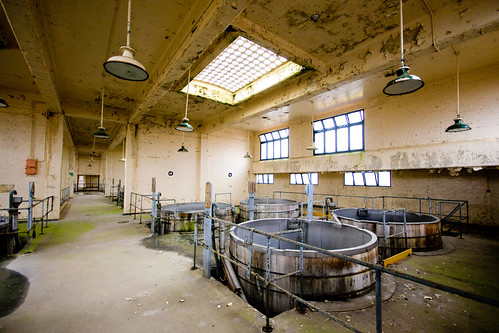
Through a connecting passageway, with a stern warning about unboiled guncotton (nitrocellulose):
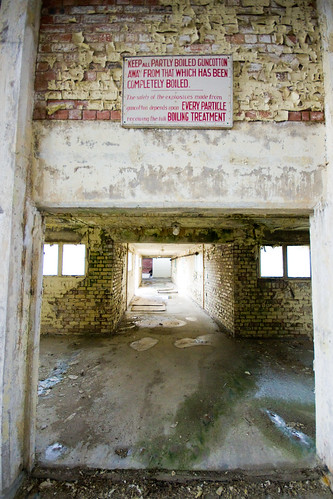
Then the mixing house, where nitroglycerin was introduced to the guncotton - the shelter, I think, refers to an air-raid shelter:
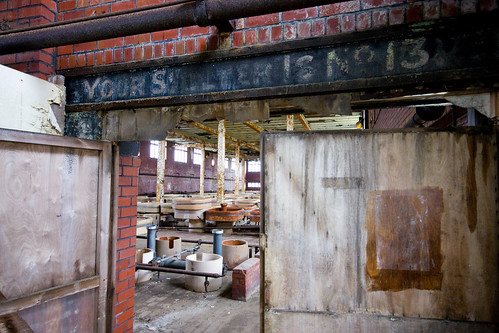
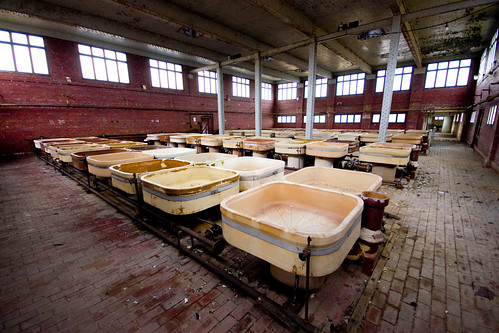
In the acids section, a three-storey glass retort:
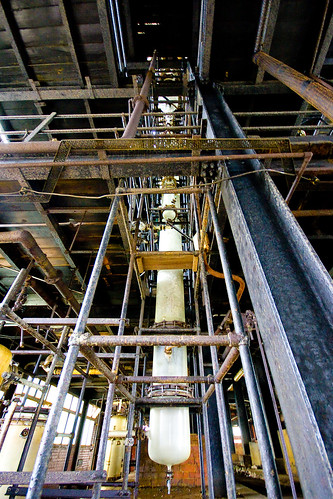
In a nitration building, more giant tanks:
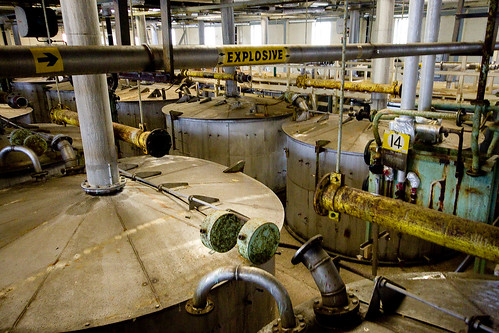
Cordite is made and extruded while damp, to stop it burning - then it needs to be dried. ROF Bishopton had over 80 miles of narrow-gauge rail lines used to move materials around the site, so the damp cordite was loaded onto wagons and moved into one of dozens of drying bays, were hot air was blown through the wagons:
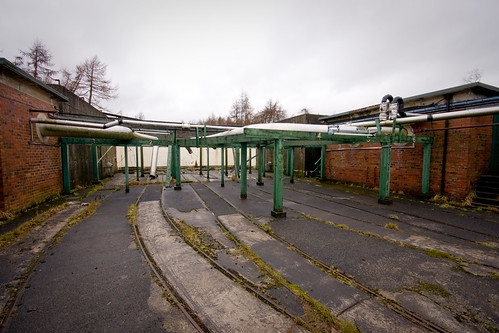
Cordite is processed in various ways - this is a rolling mill:
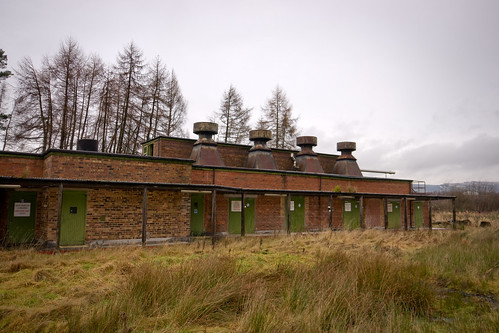
Note the giant roof vents - each of these is over one rolling machine:
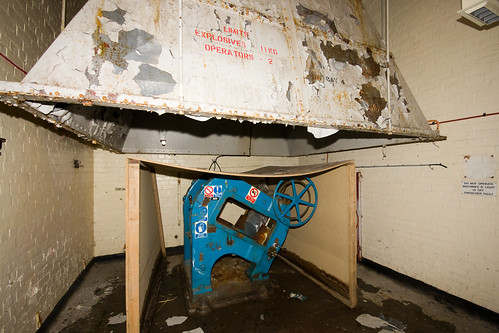
Then onto the laundry - like all explosives factories, ROF Bishopton had a worker's uniform - outdoor clothes were strictly banned because they could contain metal or other materials that could cause an explosion.
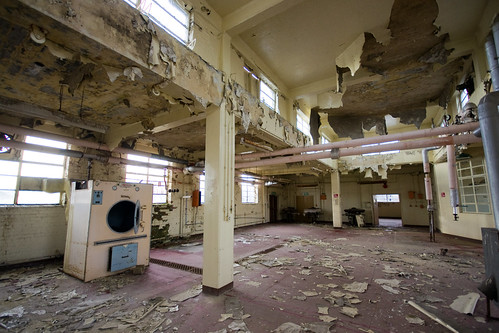
Earlier, I said there were three factories, but there was also Factory 0 - this was the admin and support buildings, including workshops:
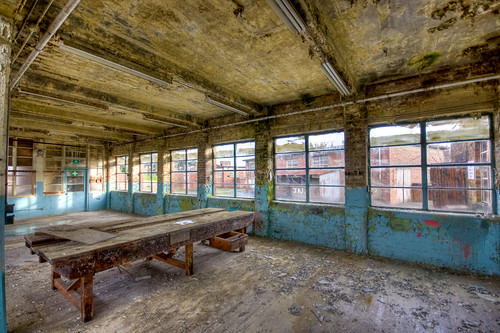
For my second visit, I was more prepared, with a list of places that looked interesting on Google Earth. First up was one of two drum blenders, where highly explosive materials were mixed in a building inside a giant blast wall - it's interesting to compare these to an almost identical building at ICI Ardeer:
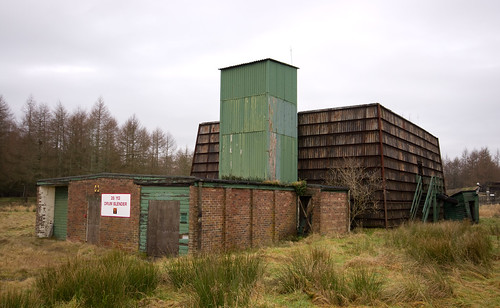
Inside, the blending drum itself:
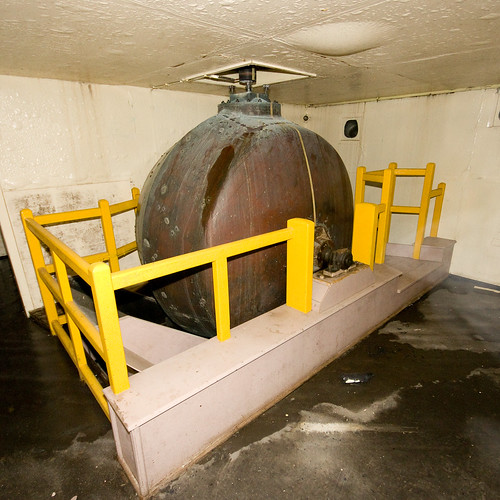
A panorama of the second larger drum blender shows the inner three-storey building inside the blast wall - the gantry is an emergency exit so workers on the upper level could get out quickly:
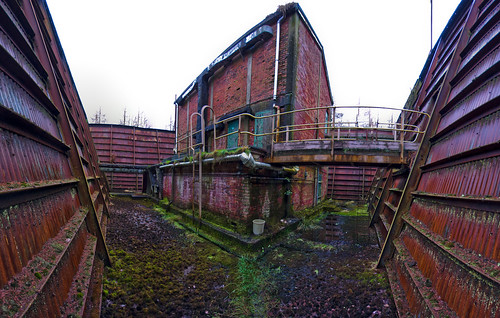
The drum bender is controlled from a shed outside the blast wall, to cut down on the number of workers at risk:
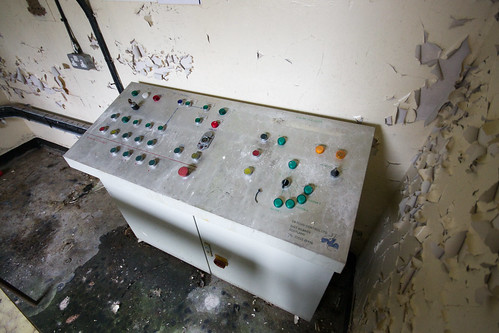
A wee diversion - ROF Bishopton was made up of the compulsory purchase of seven farms and one country mansion - the farm buildings were either demolished or converted to other uses, but Dargavel House was almost untouched:
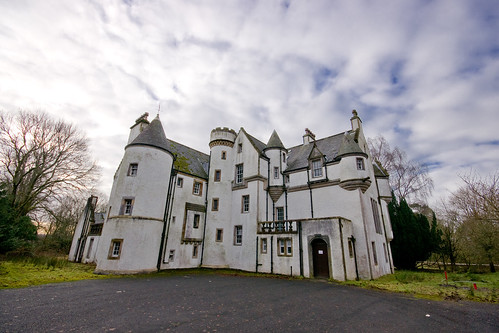
On to the CCC (Combustible Charge Container) felting, pressing, lacquering and finishing building - this is similar to the guncotton works, but also has a series of presses in blast-proof bays:
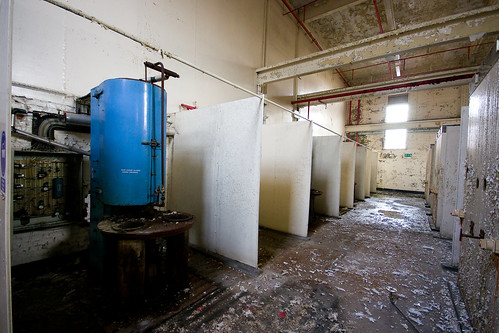
More long connecting corridors, with a strict warning sign:
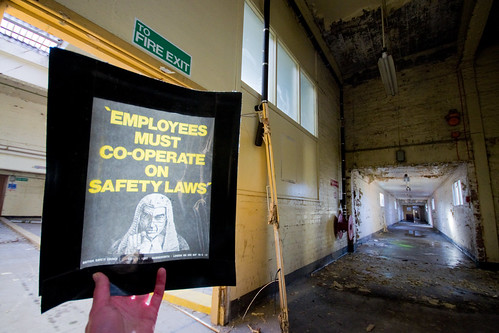
Then onto the white phosphorus section - the blue building in the background is the Factory II boiler house. Each factory had it's work independent power supply from a boiler house and separate power station - the steam also heated all the 2000+ buildings on site:
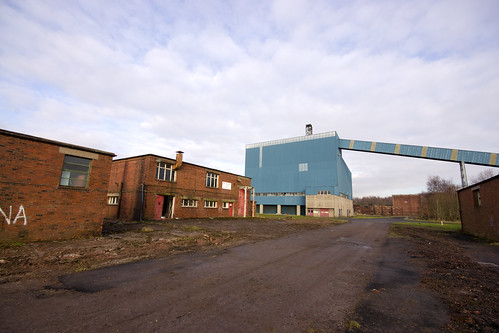
Inside the white phosphorus section:
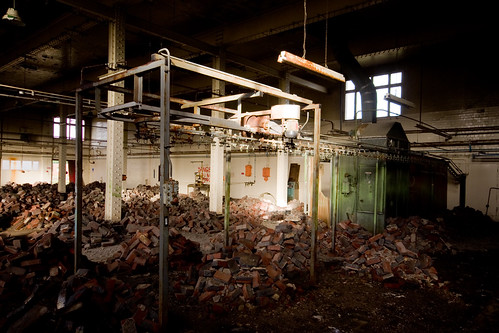
On to a giant acid settling tank - to give you an idea of scale, the white walls are about 10 feet high:
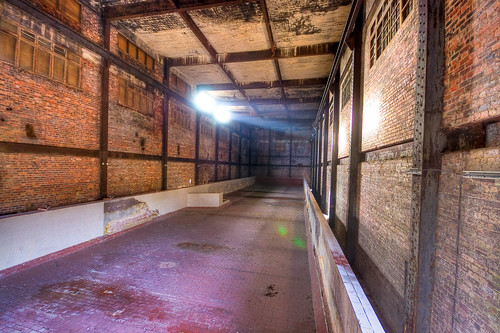
...to be continued.
I spent three days exploring ROF Bishopton, taking hundreds of pictures - even the edited highlights run to 270 pictures, so this is just a brief summary of this absolutely massive (2.5 x 1.5 miles) site. I'll do it in order of my explorations.
Bishopton had over 20 miles of standard-gauge rail lines - these were used with the ROF's own fleet of diesel locos to move raw materials and finished propellant. This is one engine shed for the diesel engines:

Next onto the pulping and blending house - cordite is a mix of nitroglycerin and nitrocellulose:

Nitrocellulose pulping is very similar to paper pulping, so paper machinery was used - rows and rows of beaters made by Bertrams of Edinburgh:

In the same building, giant tanks store the nitric and sulphuric acids used in the process:

And settling troughs are used to recover waste acid:

I visited four separate pulping and blending houses in all three factories - all similar in design and layout, but different in size:

Next, onto a vat house - again, these were duplicated:

Through a connecting passageway, with a stern warning about unboiled guncotton (nitrocellulose):

Then the mixing house, where nitroglycerin was introduced to the guncotton - the shelter, I think, refers to an air-raid shelter:


In the acids section, a three-storey glass retort:

In a nitration building, more giant tanks:

Cordite is made and extruded while damp, to stop it burning - then it needs to be dried. ROF Bishopton had over 80 miles of narrow-gauge rail lines used to move materials around the site, so the damp cordite was loaded onto wagons and moved into one of dozens of drying bays, were hot air was blown through the wagons:

Cordite is processed in various ways - this is a rolling mill:

Note the giant roof vents - each of these is over one rolling machine:

Then onto the laundry - like all explosives factories, ROF Bishopton had a worker's uniform - outdoor clothes were strictly banned because they could contain metal or other materials that could cause an explosion.

Earlier, I said there were three factories, but there was also Factory 0 - this was the admin and support buildings, including workshops:

For my second visit, I was more prepared, with a list of places that looked interesting on Google Earth. First up was one of two drum blenders, where highly explosive materials were mixed in a building inside a giant blast wall - it's interesting to compare these to an almost identical building at ICI Ardeer:

Inside, the blending drum itself:

A panorama of the second larger drum blender shows the inner three-storey building inside the blast wall - the gantry is an emergency exit so workers on the upper level could get out quickly:

The drum bender is controlled from a shed outside the blast wall, to cut down on the number of workers at risk:

A wee diversion - ROF Bishopton was made up of the compulsory purchase of seven farms and one country mansion - the farm buildings were either demolished or converted to other uses, but Dargavel House was almost untouched:

On to the CCC (Combustible Charge Container) felting, pressing, lacquering and finishing building - this is similar to the guncotton works, but also has a series of presses in blast-proof bays:

More long connecting corridors, with a strict warning sign:

Then onto the white phosphorus section - the blue building in the background is the Factory II boiler house. Each factory had it's work independent power supply from a boiler house and separate power station - the steam also heated all the 2000+ buildings on site:

Inside the white phosphorus section:

On to a giant acid settling tank - to give you an idea of scale, the white walls are about 10 feet high:

...to be continued.




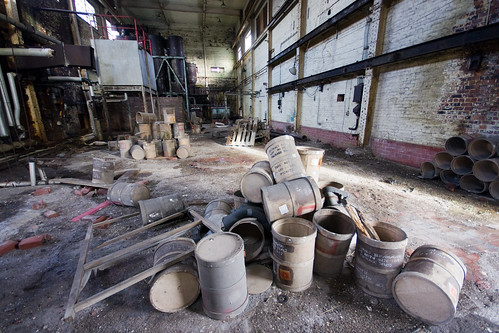
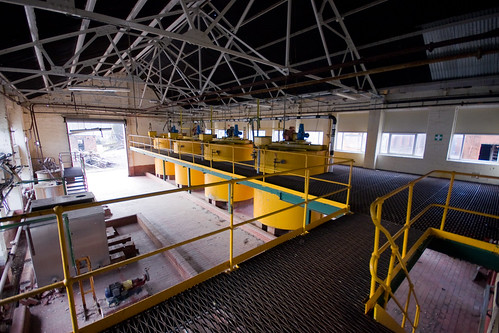
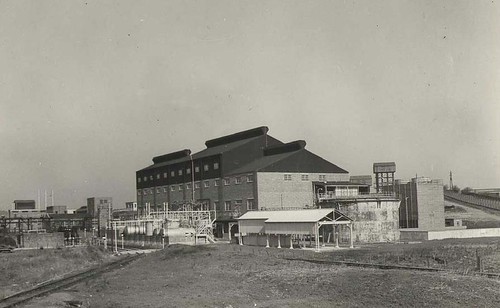
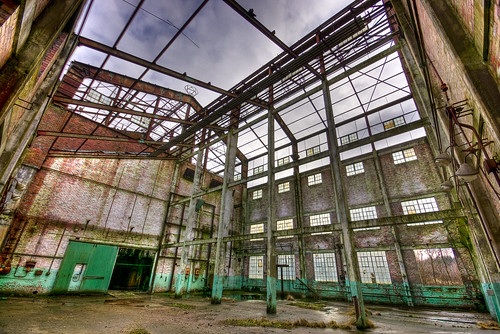
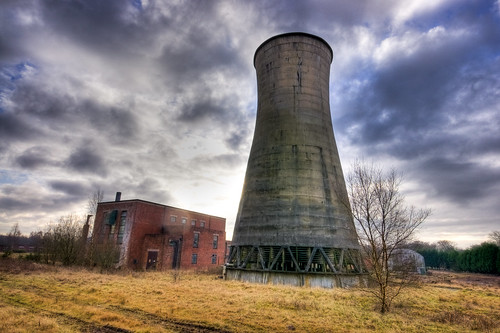
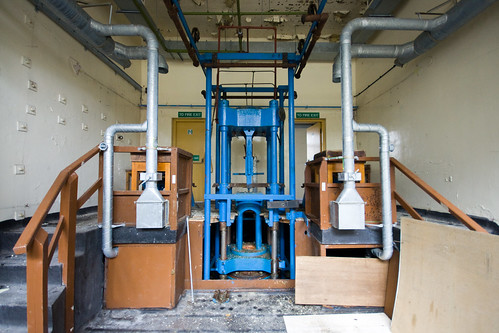
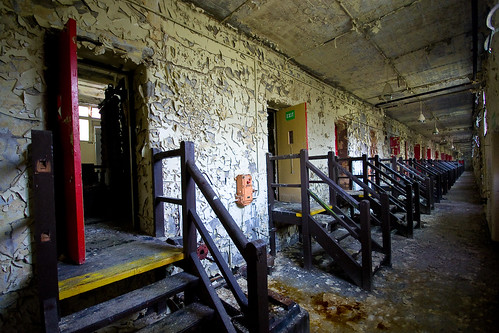
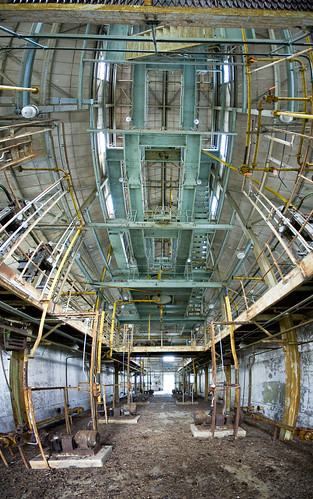

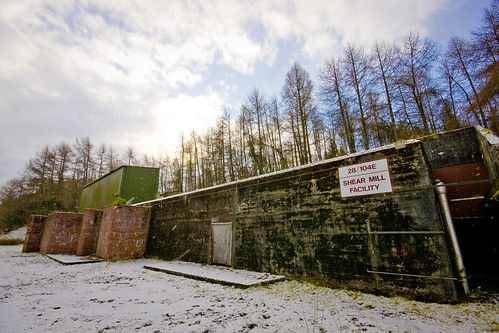
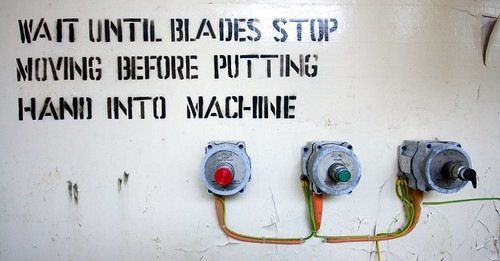
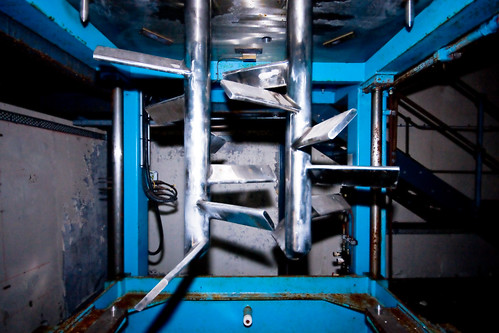
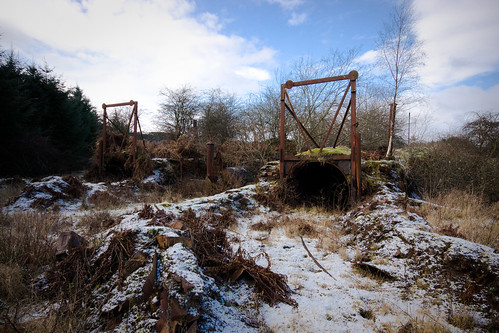
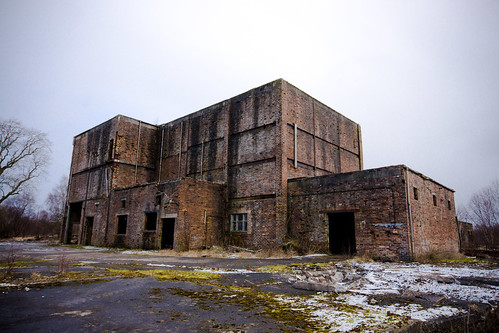
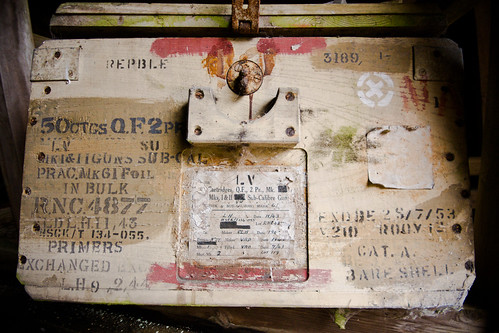
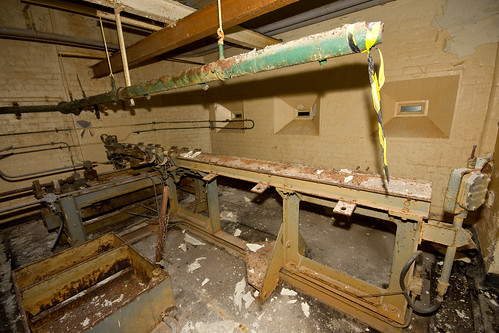
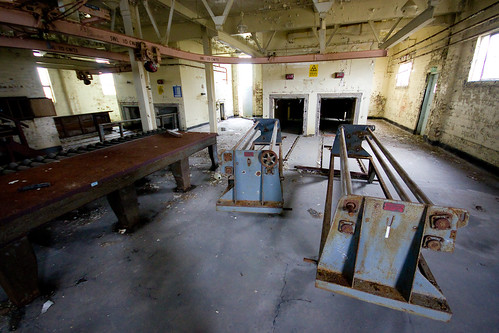
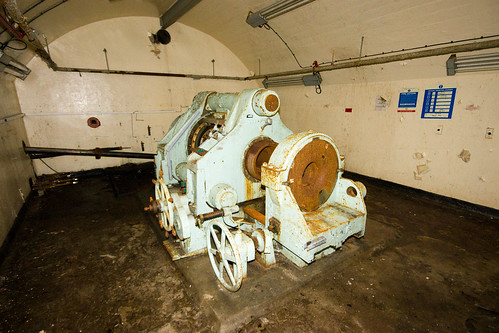
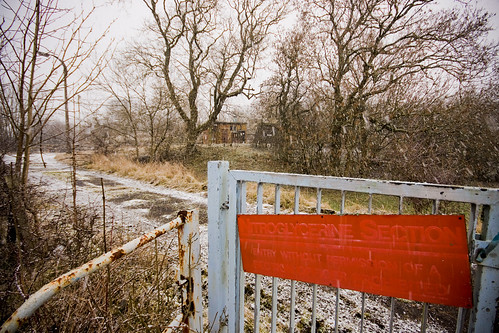
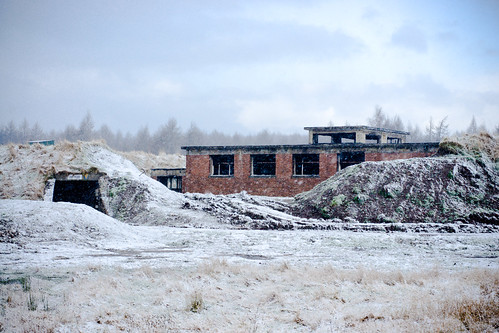
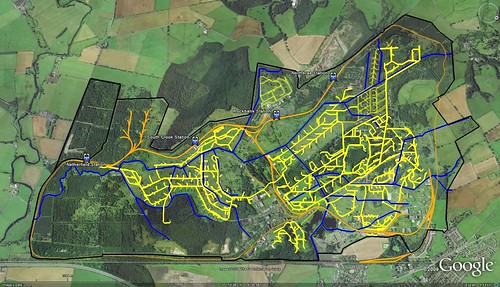
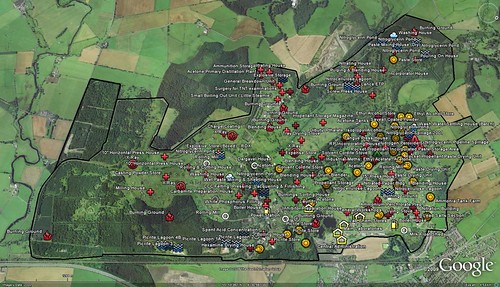
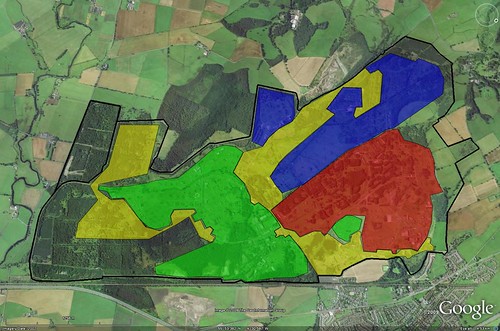





























 I learned something new today
I learned something new today 